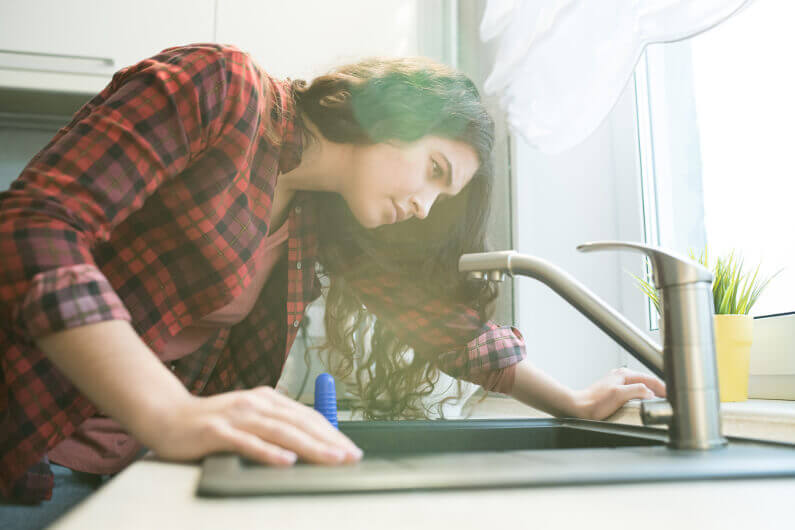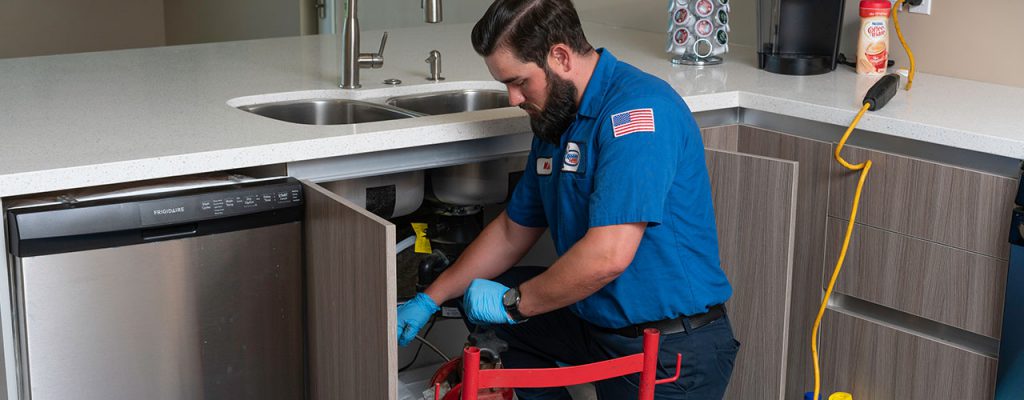Tips to Dealing with Plumbing Problems in Older Homes
Click HereWe've come across this article pertaining to Common Plumbing Problems in Older Homes below on the web and accepted it made good sense to write about it with you over here.

Older homes frequently include appeal, character, and history, but they can additionally bring a host of plumbing concerns. Whether you're taking care of aging pipelines, low water stress, or leakages, knowing exactly how to address these usual problems is critical to keeping a risk-free and useful home. In this guide, we'll discover the common pipes challenges encountered by older homes and offer sensible services to maintain your plumbing in top form.
Comprehending Common Pipes Concerns
Aging Pipelines
One of the most common concerns in older homes is maturing pipelines. Depending upon the period in which your home was built, the pipes could be made from products that have actually weakened gradually, such as galvanized steel, cast iron, or even lead. These materials can rust, come to be breakable, or create leaks, resulting in water damages and possible health hazards.
Low Water Pressure
If you're experiencing low water pressure, it could be because of natural resources, deterioration inside the pipes, or old components that are no longer functioning effectively. This can be a significant inconvenience, especially in locations like showers and sinks.
Dripping Pipes
Leaks are one more regular problem in older homes, usually triggered by rusty or damaged pipes. Even small leaks can cause substantial water damage, mold growth, and enhanced water expenses if not attended to promptly.
Outdated Fixtures
Outdated plumbing fixtures such as faucets, toilets, and showerheads not only look old yet may also be less efficient, susceptible to leaks, or incompatible with modern-day pipes criteria.
Pipeline Rust
Rust is a typical issue in older pipelines, specifically those made from galvanized steel or actors iron. Rusty pipes can restrict water flow, cause discoloration, and eventually lead to leaks or pipeline ruptureds.
Examining the Problem of Your Pipes
Checking Visible Pipelines
Beginning by evaluating any type of visible pipelines in your home, such as those in basements, crawl spaces, or under sinks. Seek indications of corrosion, leakages, or rust, which can suggest underlying problems.
Looking for Leakages
Check for leakages by examining locations around faucets, commodes, and under sinks. You can likewise monitor your water meter prior to and after a period of no water make use of to discover hidden leaks.
Water Top Quality Testing
Older pipelines can impact the quality of your water. Conduct a water quality test to check for contaminants such as lead, corrosion, or various other pollutants that may be introduced by aging pipelines.
Solutions for Usual Plumbing Concerns
Changing Aging Pipes
If your home has old, wearing away pipelines, think about replacing them with modern-day materials like copper or PEX. This can be a significant financial investment, but it will protect against future problems and boost the security and dependability of your plumbing system.
Taking Care Of Low Water Stress
To take care of low water stress, start by cleansing or replacing old components and removing mineral build-up in the pipes. If the trouble persists, it might be necessary to change sections of rusty pipes.
Fixing and Changing Leaking Pipelines
For little leaks, you can use pipe clamps or epoxy putty as a momentary fix. Nevertheless, it's best to change leaking pipelines entirely to prevent more damage.
Updating Fixtures
Upgrading old components to modern, water-efficient designs can boost your home's plumbing performance and lower water usage. Seek fixtures with the WaterSense label for the very best efficiency.
Handling Pipeline Rust
If your pipelines are worn away, replacing them with corrosion-resistant materials like copper, PVC, or PEX is the very best remedy. Regular examinations and water quality maintenance can aid prevent further corrosion.
When to Call an Expert
While some plumbing issues can be handled with DIY services, there are times when it's finest to contact an expert. If you're dealing with major leaks, comprehensive rust, or are not sure regarding the problem of your pipes, a licensed plumbing can offer professional assessment and repair work.
Preventive Maintenance Tips
Regular Evaluations
Frequently check your plumbing system for signs of wear and tear. Capturing concerns early can stop expensive repair work down the line.
Water Pressure Regulation
Ensure your water stress is within the suggested array to stay clear of emphasizing your pipelines and fixtures. A plumbing technician can set up a pressure regulator if needed.
Water Quality Maintenance
Install water filters or softeners if your water high quality is poor. This can shield your pipelines and components from damages caused by hard water or impurities.
Aggressive Pipeline Substitute
If your home has very old pipes, consider proactive substitute prior to major problems arise. This can conserve you from emergency situation repair work and water damage.
Verdict
Managing plumbing problems in older homes requires a mix of alertness, precautionary maintenance, and timely upgrades. By comprehending the typical challenges and recognizing when to look for professional aid, you can guarantee your pipes system remains useful and trustworthy for many years to come.
7 Common Plumbing Issues in Older Homes
Read More Plumbing Articles
Whether you're mulling over purchasing your dream period property, or you already own one, being aware of common plumbing problems in old homes can help you avoid expensive mishaps.
Many plumbing problems in old homes are similar to those faced in newer properties, but some are more prevalent in houses over a certain age. If you've recently bought an old house or haven't had your aging plumbing system inspected in a while, it's worth keeping an eye out for the following issues:
Bad Pipe Materials
Depending on the age of your home, the pipe materials used in your plumbing system may not comply with modern building codes and could be unsafe.
Lead pipes are the most dangerous type of old plumbing pipes. This metal was once used extensively for manufacturing water pipes because it's easy to shape and has a long lifespan. Plumbers also used it to solder joints between pipes made from other materials. However, lead can cause serious health problems, particularly in children. Drinking water from pipes containing lead can lead to lead poisoning symptoms, such as stomach pain and fatigue, so it's essential to replace them if you discover them in your home.
Outdated Fixtures
Even if the previous owners installed high-quality fixtures, these won't be immune to the effects of age and wear and tear. Over time, fixtures can corrode and wear down, increasing the likelihood of leaks and clogs.
Sometimes, an outdated fixture can be a minor irritation that makes using your plumbing system less convenient. However, it's best to maintain older plumbing components carefully and replace them when they show signs of failure to avoid a major leak and water damage.
Corroded or Leaking Pipes
Corroded pipes are a common plumbing issue in old homes. Corrosive substances in the water supply can gradually break down the metal used to make the pipes, eventually causing leaks. Corrosion can also cause sediment to build up, increasing the chances of a clogged pipe. All these issues take time to develop, making them more likely in old house plumbing.
Drain Problems
Older home drainage systems were often installed before the arrival of appliances such as garbage disposals, so they're frequently incapable of handling modern household usage. The result could be frequent clogs or water backing up into sinks and other fixtures.
A failing sewer line is the most serious drainage issue commonly encountered in old houses. This problem is more likely if you've remodeled your home to add more fixtures, placing more pressure on a sewer line not designed for the purpose. Eventually, the line can become clogged, causing unpleasant indoor smells, poor drainage and contaminated wastewater backing up into your fixtures.
Pipe Bellies
Pipe bellies develop when pipes buried in your home's foundation start sagging as the building settles. They create downward slopes, affecting water drainage and increasing the risk of significant blockages. You don't need to worry about pipe bellies in a pressurized main line, as the water pressure prevents the pipes from clogging, but they can cause issues in drain lines.
Root Intrusion
Root intrusion occurs when trees and other shrubs grow roots too close to your sewer line or water service line. Sometimes, the roots penetrate the pipe walls, leading to leaks and soft or wet areas in your yard.
Unfortunately, root intrusion is a more common plumbing problem in old homes. That's because older houses are more likely to have pipe bellies allowing standing water to accumulate, attracting roots to the moist conditions.
https://www.elocal.com/resources/home-improvement/plumbing/faq/plumbing-issues-in-older-homes/

We hope you enjoyed our part about Main Plumbing Issues Found in Old Houses. Thank you for taking time to browse our posting. Sharing is nice. One never knows, you may be doing someone a favor. Thanks a lot for being here. Come back soon.
Check This Out